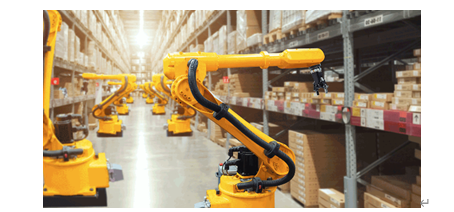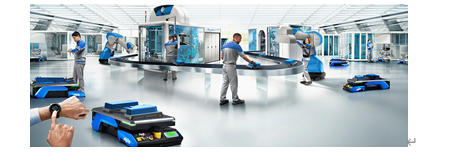
 HOME >> News >> Industry News
HOME >> News >> Industry News
With the progress of technology and the popularization of the manual, all walks of life have changed dramatically. Among them, the internal material handling industry is one of the most obvious areas affected. From the simple moving car to the current hand-moving moving moving machine, we have seen a huge change in this industry.

What is the internalization of logistics?
The manual operation of internal logistics refers to the use of advanced technology and equipment to carry out manual operation of logistics activities such as material transportation, storage and handling within the enterprise, in order to improve efficiency, reduce costs and enhance the accuracy of management.
It mainly includes the following siting:
An automated transport system (ATS): This includes an automated guided vehicle (AGV), a conveyor belt, an automated physical warehouse, etc. These systems can automatically transfer materials from one place to another, reducing the need for handling.
HAND-ON STORAGE AND RETRIEVAL SYSTEM (AS/RS): This is a manual system consisting of shelves, forklifts and control systems for the manual storage and retrieval of goods. It can improve the space utilization rate and work efficiency of the warehouse.
manual picking system: this includes manual picking machines based on machine vision, mechanical arm and other technologies, which can pick goods from shelves according to demand.
Logistics information systems: This includes warehouse management systems (WMS), transportation management systems (TMS), etc., which provide decision-making support for the entire logistics activity through real-time data collection, analysis and optimization.
Hands-on packaging and marking systems: for example, hand-on packaging lines, hand-on label printing and application systems, etc., which can improve the speed and accuracy of packaging.
Integration of Material Requirements Planning (MRP) and Enterprise Resource Planning (ERP) systems: This ensures that production and supply chain activities match actual demand and inventory leveling, reducing waste and increasing efficiency.
Application of Internet of Things (IoT) technology: real-time monitoring of the status and location of materials through sensors, RFID and other technologies, providing data support for management and decision-making.
The use of internal logistics can bring many benefits to enterprises, such as improving productivity, reducing costs, reducing errors, and improving safety. As technology advances, we can expect more innovations and applications to emerge in this field.

(1) The traditional mode of internal material handling
Traditionally, internal material handling relies on the power and simple handling equipment. For example, people use forklifts, carts, or other simple mechanical tools to carry them. This is not only inefficient, and there are security risks. It is easy to be injured when moving heavy objects. Due to the fact that people are the main factor, the damage rate of materials is relatively high.
(2) Introduction of the automated technology
With the development of technology, manual technology began to be introduced into material handling. For example, a hand-powered forklift, a truck, a truck, etc. These hand-made tools not only improve handling efficiency, but also reduce the incidence of errors and accidents.
Handmade handling machines, such as AGV (automated guided vehicles) and AMR (automated mobile machines), use advanced sensors, vision systems and algorithms to achieve accurate and efficient handling. They can move according to a predetermined path or a planned path in real time, avoiding obstacles and ensuring safe and accurate delivery of materials.

(3) the advantages of the manual
To improve efficiency: Handset can work continuously without rest, and the speed and accuracy of the work are far higher than that of the work.
Safety enhancement: The automated equipment can accurately identify and avoid obstacles, reducing the accident rate.
Reduced Errors: The machine works according to the scheduled procedures and is not affected by emotions, fatigue, and other factors, thus reducing Errors.
Cost reduction: Although the initial investment is relatively high, in the long run, the use of the equipment can save the cost of the power and enable the enterprise to obtain a higher rate of return.